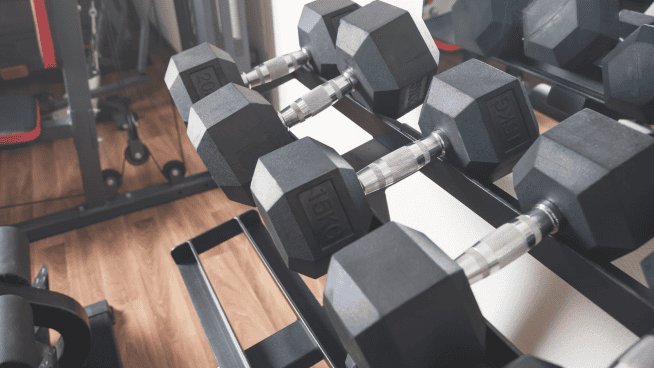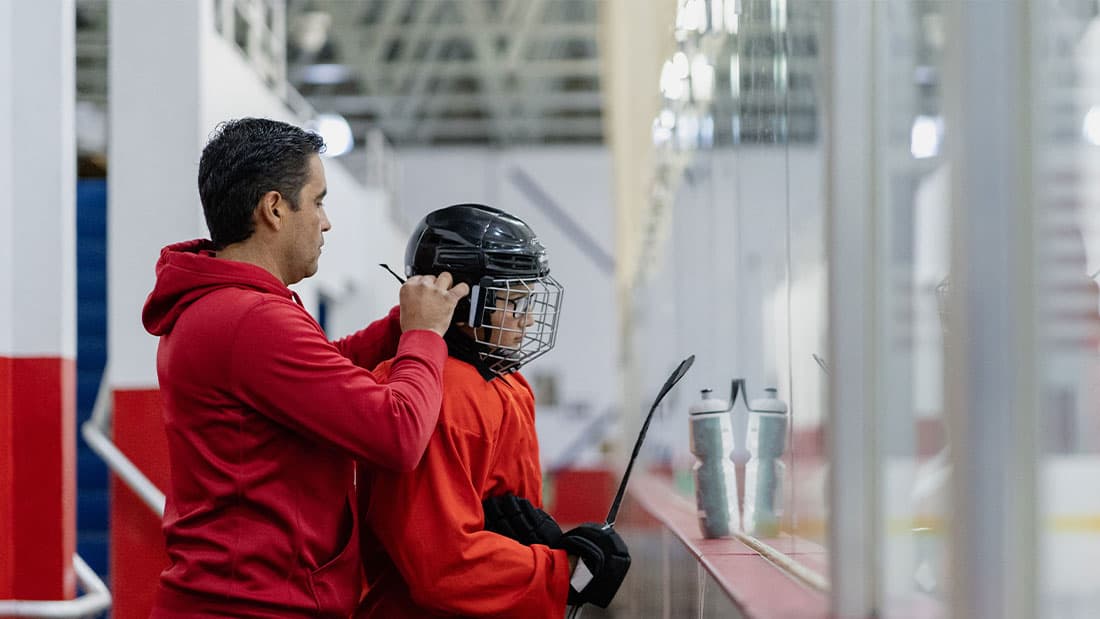Boost Your Sprint with these Jump Exercises
One of the most critical aspects of sprinting is accelerating quickly from a stationary position. Acceleration is the horizontal force that propels you into top-end speed, and it is a crucial factor in achieving faster sprint times. Athletes dedicate significant time and effort to perfecting their explosive starts, working tirelessly on their horizontal power.
Jumping exercises that involve pushing off from the ground horizontally are a great way to boost your sprint speed, strength, and power. These exercises work out all the essential muscle groups you need for sprinting, like your glutes, quads, hamstrings, calves, and core muscles. For example, when you do broad jumps, you use all these muscles to generate force and move your body forward.
When you want to go faster, you must push yourself forward more forcefully. This force is called horizontal force. It helps you accelerate quickly and maintain your top-end speed. At your fastest point, both the horizontal and vertical forces work together.
How Horizontal Jumping Benefits Sprinting
Horizontal jumping exercises precisely match sprinting biomechanics and movement patterns.
Explosive Power Development: Explosive power is vital for sprinting. The amount of force generated during a horizontal jump, particularly during the takeoff phase, is equivalent to the quick and forceful leg drive needed for achieving sprint acceleration. A powerful horizontal jump can significantly improve your overall sprinting performance.
Muscle Engagement: When you perform horizontal jumps, you engage the same essential muscles in sprinting. These muscles include the quadriceps, hamstrings, glutes, and calf muscles, which are crucial for generating the force required for sprinting.
Acceleration is a crucial component of sprinting. The explosive push-off during horizontal jumps mimics this phase. It involves extending the body through hip propulsion, increasing stride length, positive shin angles, and toe push-off. It’s best to strike the ground behind your hip to maximize propulsion. The greater the horizontal force you can generate, the faster your acceleration will be.
Plyometric training is a type of training that involves rapid stretching and contracting of muscles. Plyometric training improves the stretch-shortening cycle, necessary for quick and powerful movements involving the hips, shins, and ankles. When done correctly, plyometric training contributes to faster-sprinting strides.
Coordination and Technique: To perform horizontal jumping and sprinting effectively, one must have coordination and technique. When it comes to horizontal jumps, mastering the proper form can significantly impact your coordination. This, in turn, affects your sprinting mechanics. Coordination, stability, and technique enhance sprinting more efficiently and precisely.
Single-Leg Stability: Incorporating single-leg horizontal jump variations into your routine can notably boost and enhance stability and strength on each leg. This is particularly important because sprinting relies heavily on powerful single-leg pushes during each stride. Engaging in single-leg broad jumps can enhance overall sprinting performance with greater ease and efficiency.
Neuromuscular Adaptations: Horizontal jumping exercises lead to neuromuscular adaptations that enhance the connection between your nervous and muscular systems. This improved connection helps you execute sprinting movements with greater speed, precision, and power. By incorporating horizontal jumps into your training regimen, you can work towards developing a strong and reflexive neuromuscular system.
To integrate horizontal jump exercises into your training for sprinting, consider incorporating broad jumps, standing long jumps, or other variations.
Horizontal Jump Exercises
Here are horizontal jump exercises that you can incorporate into your training to improve speed and explosiveness in sprinting.
Broad Jumps:
- Stand with your feet shoulder-width apart.
- Bend your knees over your toes and put your hips into a squat position.
- Swing your arms back and explode forward, jumping as far as possible.
- Land and absorb the impact by bending your knees.
Single-Leg Broad Jumps:
- Stand on the floor.
- Bend your knee over your toes and put your hips into a squat position.
- Swing your arms back and explode forward, jumping as far as possible.
- Land and absorb the impact by bending your knee.
Bounding:
- Take long, exaggerated strides while emphasizing powerful push-offs.
- Swing your arms in a coordinated motion to enhance the bounding movement.
- Focus on covering as much distance as possible with each stride.
Box Jumps:
- Stand in front of the box.
- Jump onto the box by bending the knees over the toes and land on the box with both feet.
- Step back down and repeat each rep for power.
Single-Box Jumps:
- Stand in front of a box.
- Jump onto the box by bending the knee over the toes and land on the box with one foot.
- Step back down and repeat each rep for power. After five reps, do the other side.
Single Leg Depth Jumps:
- Stand on a box.
- Jump off the box, land on one foot, and jump vertically immediately.
- Emphasize a quick transition from landing to takeoff.
Triple Jump Progressions:
- Mimicking the triple jump phases (hop, step, and jump).
- Start with a single broad jump, a single-leg jump, and a final broad jump.
- Emphasize smooth transitions between the phases.
Seated Bench Jumps:
- Sit on a bench.
- Explosively jump off the seat by bringing your knees over your toes, extending your hips and knees.
- Land on the ground and absorb the impact.
Tuck Jumps:
- Start with your feet hip-width apart.
- Jump vertically and bring your knees toward your chest.
- Land and immediately go into the next jump.
Kangaroo Jumps:
- Stand with feet shoulder-width apart.
- Jump forward with both feet while swinging your arms forward.
- Land and immediately transition into the next jump.
Pogo Hops:
- Stand on a flat surface with feet close together.
- Perform rapid, small jumps using only your ankles.
- Focus on quick ground contact and minimal knee flexion.
Split Squat Jumps:
- Start in a lunge position.
- Jump vertically and switch legs in mid-air, landing in a lunge on the opposite leg.
- Repeat the movement, alternating legs.
It’s important to note that while horizontal jumping is significantly beneficial for sprinters, your training program should include other elements such as strength training, sprint drills, and flexibility work.
Incorporate these exercises into your training program while maintaining proper form and technique. Listen to your body, gradually progress, and allow for adequate rest between sessions.
Check out my INSTANT STRENGTH book for total strength, speed, and power programs.
To maximize stability, mobility, and flexibility, check out my book, THE BALANCED BODY.
To see great exercises, methods, and techniques videos, subscribe to my YouTube channel, BALANCED BODY.
RECOMMENDED FOR YOU
MOST POPULAR
Boost Your Sprint with these Jump Exercises
One of the most critical aspects of sprinting is accelerating quickly from a stationary position. Acceleration is the horizontal force that propels you into top-end speed, and it is a crucial factor in achieving faster sprint times. Athletes dedicate significant time and effort to perfecting their explosive starts, working tirelessly on their horizontal power.
Jumping exercises that involve pushing off from the ground horizontally are a great way to boost your sprint speed, strength, and power. These exercises work out all the essential muscle groups you need for sprinting, like your glutes, quads, hamstrings, calves, and core muscles. For example, when you do broad jumps, you use all these muscles to generate force and move your body forward.
When you want to go faster, you must push yourself forward more forcefully. This force is called horizontal force. It helps you accelerate quickly and maintain your top-end speed. At your fastest point, both the horizontal and vertical forces work together.
How Horizontal Jumping Benefits Sprinting
Horizontal jumping exercises precisely match sprinting biomechanics and movement patterns.
Explosive Power Development: Explosive power is vital for sprinting. The amount of force generated during a horizontal jump, particularly during the takeoff phase, is equivalent to the quick and forceful leg drive needed for achieving sprint acceleration. A powerful horizontal jump can significantly improve your overall sprinting performance.
Muscle Engagement: When you perform horizontal jumps, you engage the same essential muscles in sprinting. These muscles include the quadriceps, hamstrings, glutes, and calf muscles, which are crucial for generating the force required for sprinting.
Acceleration is a crucial component of sprinting. The explosive push-off during horizontal jumps mimics this phase. It involves extending the body through hip propulsion, increasing stride length, positive shin angles, and toe push-off. It’s best to strike the ground behind your hip to maximize propulsion. The greater the horizontal force you can generate, the faster your acceleration will be.
Plyometric training is a type of training that involves rapid stretching and contracting of muscles. Plyometric training improves the stretch-shortening cycle, necessary for quick and powerful movements involving the hips, shins, and ankles. When done correctly, plyometric training contributes to faster-sprinting strides.
Coordination and Technique: To perform horizontal jumping and sprinting effectively, one must have coordination and technique. When it comes to horizontal jumps, mastering the proper form can significantly impact your coordination. This, in turn, affects your sprinting mechanics. Coordination, stability, and technique enhance sprinting more efficiently and precisely.
Single-Leg Stability: Incorporating single-leg horizontal jump variations into your routine can notably boost and enhance stability and strength on each leg. This is particularly important because sprinting relies heavily on powerful single-leg pushes during each stride. Engaging in single-leg broad jumps can enhance overall sprinting performance with greater ease and efficiency.
Neuromuscular Adaptations: Horizontal jumping exercises lead to neuromuscular adaptations that enhance the connection between your nervous and muscular systems. This improved connection helps you execute sprinting movements with greater speed, precision, and power. By incorporating horizontal jumps into your training regimen, you can work towards developing a strong and reflexive neuromuscular system.
To integrate horizontal jump exercises into your training for sprinting, consider incorporating broad jumps, standing long jumps, or other variations.
Horizontal Jump Exercises
Here are horizontal jump exercises that you can incorporate into your training to improve speed and explosiveness in sprinting.
Broad Jumps:
- Stand with your feet shoulder-width apart.
- Bend your knees over your toes and put your hips into a squat position.
- Swing your arms back and explode forward, jumping as far as possible.
- Land and absorb the impact by bending your knees.
Single-Leg Broad Jumps:
- Stand on the floor.
- Bend your knee over your toes and put your hips into a squat position.
- Swing your arms back and explode forward, jumping as far as possible.
- Land and absorb the impact by bending your knee.
Bounding:
- Take long, exaggerated strides while emphasizing powerful push-offs.
- Swing your arms in a coordinated motion to enhance the bounding movement.
- Focus on covering as much distance as possible with each stride.
Box Jumps:
- Stand in front of the box.
- Jump onto the box by bending the knees over the toes and land on the box with both feet.
- Step back down and repeat each rep for power.
Single-Box Jumps:
- Stand in front of a box.
- Jump onto the box by bending the knee over the toes and land on the box with one foot.
- Step back down and repeat each rep for power. After five reps, do the other side.
Single Leg Depth Jumps:
- Stand on a box.
- Jump off the box, land on one foot, and jump vertically immediately.
- Emphasize a quick transition from landing to takeoff.
Triple Jump Progressions:
- Mimicking the triple jump phases (hop, step, and jump).
- Start with a single broad jump, a single-leg jump, and a final broad jump.
- Emphasize smooth transitions between the phases.
Seated Bench Jumps:
- Sit on a bench.
- Explosively jump off the seat by bringing your knees over your toes, extending your hips and knees.
- Land on the ground and absorb the impact.
Tuck Jumps:
- Start with your feet hip-width apart.
- Jump vertically and bring your knees toward your chest.
- Land and immediately go into the next jump.
Kangaroo Jumps:
- Stand with feet shoulder-width apart.
- Jump forward with both feet while swinging your arms forward.
- Land and immediately transition into the next jump.
Pogo Hops:
- Stand on a flat surface with feet close together.
- Perform rapid, small jumps using only your ankles.
- Focus on quick ground contact and minimal knee flexion.
Split Squat Jumps:
- Start in a lunge position.
- Jump vertically and switch legs in mid-air, landing in a lunge on the opposite leg.
- Repeat the movement, alternating legs.
It’s important to note that while horizontal jumping is significantly beneficial for sprinters, your training program should include other elements such as strength training, sprint drills, and flexibility work.
Incorporate these exercises into your training program while maintaining proper form and technique. Listen to your body, gradually progress, and allow for adequate rest between sessions.
Check out my INSTANT STRENGTH book for total strength, speed, and power programs.
To maximize stability, mobility, and flexibility, check out my book, THE BALANCED BODY.
To see great exercises, methods, and techniques videos, subscribe to my YouTube channel, BALANCED BODY.












